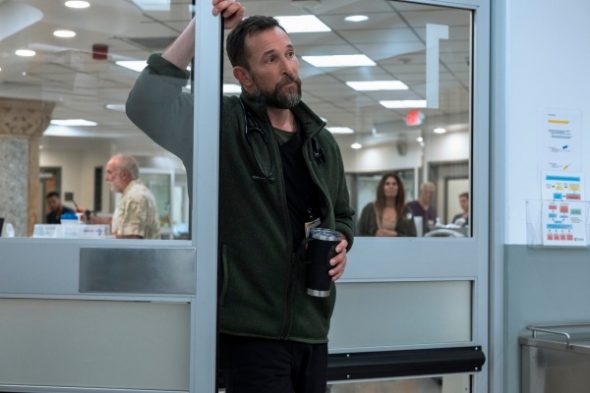At last year’s Optimizely user conference, there seemed to be some tension between a holistic approach towards digital experience and the recognition that some customers wanted to take elements of the Optimizely offering and combine them with third-party solutions in a best-of-breed stack. One Optimizely executive described their go-to-market as “threading the needle.” On the one hand, he explained, it was essential to offer customers what they want and need. But at the same time there was a belief in the value of the products in the platform all working together.

More than just marketing?
The announcement at Opticon last week of Optimizely One, a holistic (again) OS for marketers looked like another attempt at positioning the brand. We asked CMO Shafqat Islam if that was all it was.
“I think a year ago there was uncertainty, just being honest, if we should stay true to our roots of offering a traditional coupled CMS and a DXP that offers less flexibility but more simplicity (because it is all-in-one),” he said. “For lower maturity customers that was great, and that was our traditional customer base for many years. What happened over the last eighteen months to a year is that our customer base changed pretty dramatically as we’ve moved up the enterprise.”
One example of an enterprise customer is Zoom. “Three years ago we would never have thought that Zoom.com, a site where tens of millions of people come, would be hosted on our CMS. A lot of the customers we’re now signing up have resources and are looking for more modern solutions. This new customer base is pulling us towards the future, so let’s think about what they want.”
At the same time, chasing the “shiny thing” — composability, headless, SaaS — would overlook the needs of the existing base. “The answer was to offer choice: “Yes, there was hesitation, for good reason” Islam agreed. “Offering choice allowed us to move more boldly in the new direction.”
But it’s not just marketing, he emphasized. “We spent the last twelve months unifying the workflow between [Optimizely’s solutions] — tying experimentation to the content management platform, DAM to the CMS — all these pieces are now connected. There is a unified workflow that makes Optimizely One real, not just something we dreamt up.”
Senior marketing specialist Melissa Marmion works on the employer side at job search platform Indeed, creating content to engage with people looking to fill positions. In particular, she handles the testing of content.
“I am currently using Optimizely Web and Edge,” she told us. Web is Optimizely’s web experimentation and testing tool, Performance Edge delivers content from the server closest to the visitor and thus delivers experiments faster.
Marmion has been working with Optimizely since 2015 when she was based at an ecommerce company in Austin, Texas. “Indeed already had Optimizely but didn’t have anyone running it, so that’s why I was brought in, for my SEO background and my Optimizely knowledge.” She runs multivariant tests — “Anything from full funnel tests to CTA testing. There are simple tests like image changes, or sometimes a full view redesign.”
Indeed has a lively experimentation culture. “We’re always testing things and wanting to get more learnings,” she said. Indeed has been looking at other solutions on the Optimizely menu, but is currently just using the testing capabilities. “We have proven our ROI time and time again, which is why we continue to invest in it. In fdact, we’ve invested more in it since we’ve seen so much growth.”
Interview with Melissa Marmion, Indeed
On the customer side
To dive deeper into the influence customers have had on Optimizely’s development, we spoke to Chad Wolf, EVP and chief customer officer. “We launched a program a couple of years ago that we called ‘Customers for Life,’” he said. “We don’t play the short game. We think about value with these customers over time.”
Wolf also agreed that increased commitment to the enterprise was a conscious decision. “I think today we have a suite of products that can serve the enterprise in a way we couldn’t four years ago,” he said. “We had plenty of big-name brands four years ago, but when you started thinking about data, analytics and testing at scale over hundreds of millions, or billions, of interactions, that’s a game we didn’t play.”
That doesn’t mean abandoning the mid-market or small businesses. After all, said Wolf, Optimizely One is absolutely a “TCO play.”
Aura handles ID protection, credit monitoring, anti-virus, parental controls; conversion rate optimization manager Ashley Anderson calls it “a complete cybersecurity suite for you personally.” In other words, its market is consumers, not businesses. “My job is to find ways to improve the user experience to, at the end of the day [create] more sales, more revenue.”
Aura’s main channels are SEM, paid marketing, some social “and also making some big, organic brand pushes — but that’s a little outside what I do,” she said. Like Indeed, Aura is mainly using the experimentation features from Optimizely. “Right now we’re running something where we remove a content block that has an image and replace it with a video. We’re testing which video works best on our home page. We’re running headline tests. We test full-page redesigns. We’re testing on mobile; if we move from kind of a stack to swipable, how does that perform?”
Aura also breaks up its tests according to audience segments. “We test our paid traffic differently,” she said. “We have gateways on our site, so how you enter our site — looking specifically for anti-virus or parental controls — we’ll test those segments on their own.”
Data-based experimentation is embedded in company culture, C-suite down, she told us. Anderson has a positive attitude even towards experiments that fail. “A loss is not a loss to me,” she said. “A loss is a learning; we haven’t failed anything. The ones that are most frustrating are the inconclusive ones.”
One of Optimizely’s product announcements at Opticon last week was its Experiment Collaboration dashboard. (A dashboard offering full, cross-organization visibility into the use of Optimizely’s experimentation capabilities. This is aimed at offering transparency into the hypotheses being tested and the progress being made.) “We were in the beta for it,” said Anderson. “It’s fantastic, especially for those of us in a remote world. I have an agency I work with in the U.K., they have developers in the middle east, we’re across a lot of different time zones. This allows us to move rapidly rather than waiting until I can talk to someone on Slack.”
She’s also impressed by Optimizely One. “I’m also interested in learning more about the CMS. Is it time to start thinking about switching our CMS?”
Interview with Ashley Anderson, Aura
A cohesive experience
After the long acquisition season of 2020 and 2021, Optimizely was left with a challenge. “How do we bring them together?” mused Rupali Jain, who recently joined Optimizely as chief product officer. “We’ve invested deeply in the platform to build that connective tissue, to build that coherent experience. You don’t see breakpoints when you’re transitioning between products. A lot of our customers end up buying one, two, three pieces and expanding from there rather than having to buy the whole thing at once.”
VP product strategy Kevin Li added: “People say ‘Yes, I want the workflows, I want to be able to do all of these things. You guys have been buying companies, can you please make it a cohesive experience.’”
Where Marmion and Anderson were focused on experimentation, Jay Manciocchi, head of marketing content operations as BMC software, had a story to tell about Optimizely’s Content Management Platform. This is a solution it acquired when it picked up marketing orchestration platform Welcome, founded by Shafqat Islam. The CMP aggregated the output of its widely distributed content teams into a unified set of workflows with full visibility.
“We had what I call utter content chaos,” Manciocchi admitted. “I started on the same day as a new CMO who told me, ‘Jay, I need you to implement a CMP and I need it done as quickly as possible.’ It was the Wild West of content creation and we now have one single source of truth, that is not only our content calendar but also an orchestration tool. I call it the three-legged stool; the CMP itself, the project management elements of the CMP, then also the digital asset management system. The confluence of those has led to so much more operational rigor and content governance standards. Also, we are saving so much money.”
Big wins, presented by Manciocchi on the Opticon main stage, included: 24 firmly routed workflows; one company-wide content strategy; a set of ratified governance standards that are adhered to; and, a 93% SLA adherence rate (that’s the success rate for creating content that is on target and on brand).
Given the positive experience with the CMP, BMC Software is now considering the Optimizely CMS. Manciocchi, describing himself as a GenAI guy, is also excited about the Opal and Writer announcements. Interview with Jay Manciocchi, BMC Software
The AI pieces
At Opticon, two AI initiatives were announced. Well-established Optimizely AI capabilities like content and product recommendations, together with new genAI features, were now to be known as Opal. Also announced was a partnership with AI-powered enterprise content creation platform Writer. How do these offerings play together?
“I think they do play together,” said Jain. “In most platform plays you end up creating a set of capabilities that address the needs of most customers. That does not preclude us from having partnerships, whether for the enterprise or a use case that comes to light. I imagine Writer is one of a number of partnerships we’ll be doing on AI because there’s probably going to be many more interesting use cases than the ones we choose to build ourselves.”
The specific trigger for the Writer partnership was the demand from a major customer, already using Writer, to insert Writer’s capabilities into the Optimizely workflow. “There’s no scenario in which we don’t offer our own AI capabilities,” Li underlined. “But there’s also no scenario in which we say we will only partner with Writer and OEM them for everything we do. That’s generative, but what about all the AI and machine learning that’s not generative in nature?”
It’s always possible that another major customer might build their own AI model and ask to plug it into the Optimizely platform. “Yeah,” said Li, “here’s the external workflow API, plug in whatever you want.”
The post Optimizely: A unified workflow for marketers appeared first on MarTech.
[ad_2]
Original Source Link




































































